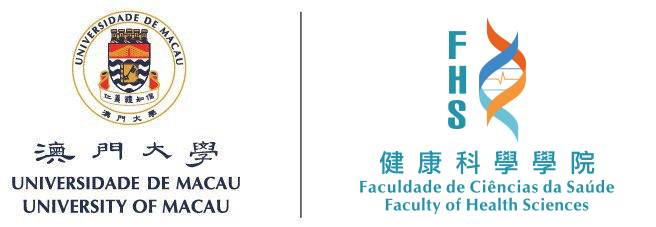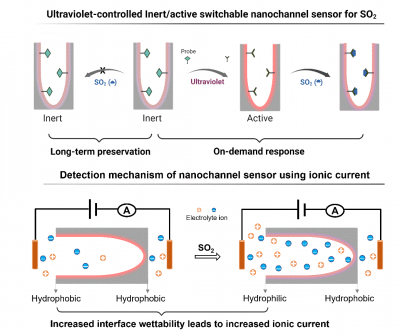A breakthrough in the development of practical sensors has been achieved by the research team led by Xuanjun ZHANG, associate professor in the Faculty of Health Sciences (FHS) at the University of Macau (UM). A light-controlled inert/active-switchable nanosensor for the detection of sulfur dioxide has been developed with the advantages of on-demand detection and long-term storage. The sensor can be applied to food safety detection, which can more effectively safeguard human health and welfare. The research results have been published in the leading international journal Nature Communications.
In conventional sensing systems, the response site is always active and therefore easily reacts with the analytes in the surrounding environment, resulting in partial damage to the detector before it is used. This will reduce the accuracy and reliability of the detection. The development of tunable sensors to meet the requirements of real-time, on-demand detection is critical to product conversion. However, it still faces significant technical difficulties.
Excessive production of formaldehyde and sulfur dioxide by living organisms is strongly associated with a variety of diseases. Formaldehyde and sulfur dioxide are often added to foods to keep them fresh. Therefore, the accurate detection of formaldehyde and sulfur dioxide is very important for human health. In an earlier study, the research team developed an efficient nanochannel sensor for effective detection of formaldehyde by regulating the wettability balance on both sides of the membrane. The related work was published in Nano Letter (2022). Based on this work, the team further developed a practical sensor for the quantitative analysis of sulfur dioxide in multiple scenarios. However, sulfur dioxide from domestic and industrial emissions reacts with the response site and reduces the reliability of the product, making sensor development and storage very difficult.
To solve this technical challenge, the team designed a photocontrolled inert/active-switchable sensor to achieve an on-demand response to sulfur dioxide. Such a nanosensor can be realized by simply modifying a photochromic probe molecule on the surface of the nanochannels. The sensor is inert to sulfur dioxide before use and does not react with sulfur dioxide. However, once irradiated by UV light, the sensor changes to an active state and reacts with sulfur dioxide very efficiently. At this time, the nanochannel membrane changes from hydrophobic to hydrophilic, facilitating more electrolyte ions entering the nanochannels. The ionic current across the membrane increases significantly. Therefore, the quantitative detection of sulfur dioxide can be achieved through the measurement of the transmembrane current.
In addition, the research team designs two non-switchable sulfur dioxide sensors to compare long-term preservation performance. In a closed sulfur dioxide atmosphere, the non-switchable nanochannel sensor reacts with sulfur dioxide and is easily damaged. However, the switchable nanosensor before UV light irradiation can avoid being damaged by sulfur dioxide. This is beneficial to the long-term preservation of the device and provides a new technical idea for the development of switchable nanosensors under other stimulation conditions.
The project is a highly integrated cutting-edge scientific investigation and product translation, with the goal of improving the reliability and shelf life of the nanosensor. The newly developed sensor can accurately detect sulfur dioxide in a wide concentration range (10 nM-1 mM) after UV light activation. Therefore, it has been successfully applied to a wide range of applications, such as the quantitative analysis of sulfur dioxide in red wine and vegetables/foods in the market. The research results have been patented and published in Nature Communications under the title “Switchable biomimetic nanochannels for on-demand SO2 detection by light-controlled photochromism”.
The corresponding author is Xuanjun ZHANG and postdoctoral student Dan ZHANG is the first author; PhD students Yongjie SUN, Zhichao WANG, and Fang LIU also made important contributions to the study. Professor Guichuan XING in Institute of Applied Physics and Materials Engineering (IAPME), UM has provided equipment for SEM measurement for this study. The core facilities of FHS, especially the Proteomics, Metabolomics and Drug Development Core and Biological Imaging and Stem Cell Core provided excellent services for the research. The project is funded by the Science and Technology Development Fund, Macao SAR (File No.: 0085/2020/A2 and 0114/2019/A2), Guangdong Basic and Applied Basic Research Foundation (File No.: 2022A1515010616 and 2023A1515012524), and UM (File No.: MYRG2020-00130-FHS and MYRG2022-00036-FHS). The full version of the research article is available at https://doi.org/10.1038/s41467-023-37654-y



